 The other night I had the chance to taste through the wines of Tinto Figuero with two of the winery principals. The setting was Solera in Manhattan. Spanish wine and food are enough to get any reasonable person excited; I know I certainly was. Part of the excitement was that I’d never before had the Tinto Figuero wines. As I was explaining to someone at this very dinner, given the choice between a wine I know I love and one I’ve never tasted I’m going to go for the wine I never tasted at least nine out of ten times.
Tinto Figuero is a family operation run by three brothers, their brother in law and their father who keeps his hand involved in the winery he started with his wife. Originally grape growers dating back some generations, they eventually turned their attention to starting a winery and producing their own wines. The goals at Tinto Figuero are to make premium wines that are consistent from vintage to vintage, express the sense of place imparted by their spot in the Ribera del Duero, and to make wines that the people who have had them before will know is a Figuero the moment it hits their lips. Those goals are simple, straightforward and lofty all at the same time.
The other night I had the chance to taste through the wines of Tinto Figuero with two of the winery principals. The setting was Solera in Manhattan. Spanish wine and food are enough to get any reasonable person excited; I know I certainly was. Part of the excitement was that I’d never before had the Tinto Figuero wines. As I was explaining to someone at this very dinner, given the choice between a wine I know I love and one I’ve never tasted I’m going to go for the wine I never tasted at least nine out of ten times.
Tinto Figuero is a family operation run by three brothers, their brother in law and their father who keeps his hand involved in the winery he started with his wife. Originally grape growers dating back some generations, they eventually turned their attention to starting a winery and producing their own wines. The goals at Tinto Figuero are to make premium wines that are consistent from vintage to vintage, express the sense of place imparted by their spot in the Ribera del Duero, and to make wines that the people who have had them before will know is a Figuero the moment it hits their lips. Those goals are simple, straightforward and lofty all at the same time.
At dinner we tasted through four of their wines. These offerings make up the bulk of their portfolio and are their most widely distributed releases. Each of the wines is 100% Tempranillo, and sourced from their own vineyards in the Ribera del Duero. Grape selection and oak treatment are the major differences in how each wine is produced. My impressions were as follows:
Tinto Figuero – 2007 Roble Four Month In Barrel. Just fewer than 6,000 cases of this selection were produced. As the name indicates, this wine spent 4 months in oak. The suggested retail price is $19.99. Fresh, crushed raspberry aromas mark the nose of this wine. The fresh berry theme continues through the palate and onto the finish which features mineral notes and subtle hints of earth. This is Figuero’s everyday wine. It provides lots of bright, vibrant flavors and will be a good match for casual finger foods such as an assortment of tapas.
Tinto Figuero – 2005 Crianza Twelve Months In Barrel. Just over 20,000 cases of this offering were bottled. Fruit was sourced from vines with 20-20 years (80%) of age and the remainder (20%) over 50 years. Oak aging occurred over 12 months in a combination American (90%) and French (10%) oak. The suggested retail price for this wine is $28.99. Red raspberry aromas billow from the nose of this wine. Wisps of vanilla follow; the palate is a couple of steps up in intensity and complexity from the Four Month, Sour blackberry jam notes emerge on the finish which has good length and excellent acidity. A grilled steak would be an excellent match for this wine.
Tinto Figuero – 2004 Reserva Fifteen Months In Barrel. 8,333 six bottle cases of this wine were produced. Fruit was sourced from vines with more than 50 years of age. Barrel aging was achieved over 15 months in a combination of American (95%) and French (5%) oak. The suggested retail price for this wine is $53.99. This 2004 Tempranillo opens with a nose so intense, so inviting, and so appealing that it’s almost absurd to try and describe it. More than one person at the table would have likely jumped into the glass to get closer to this wine if that was possible. Kirsch Liqueur is one of the more prominent components of the nose, but that only begins to describe an aroma that is the very embodiment of the term intoxicating. It took me quite awhile to taste this wine as I couldn’t get past the nose to actually focus on tasting it. Once I did sip it, the wine greeted me with wave after wave of intense berry fruit flavor. And if the flavors weren’t quite as intense as the nose, they were certainly well more than adequate. Hints of vanilla and oak emerged at mid-palate to complement the fruit and lead to the finish which was as impressive as the nose. This wine lingers for a good long while. Everything about this selection is delicious. While it’s excellent now it will certainly improve over time in the bottle.
 Tinto Figuero – 2004 Noble. 1,166 six bottle cases of this offering were produced. Fruit for this selection was sourced from vines with more than 70 years of age. Oak aging occurred over a period of 21 months. The first 15 months was spent in American oak followed by 6 months in French oak. An additional 15 months of bottle age was allowed before release. The suggested retail price for this wine is $130.99. First and foremost this wine is still a baby. It was decanted for 3 hours before we started to taste it. While it was certainly opening up this wine was still tight. Fresh cherries, leather and cigar box aromas mark the nose. Raspberry, blackberry and huckleberry flavors are all present in the layered palate. Dusty dark chocolate emerges around mid-palate and continues through the prodigious finish which is also marked by hints of chicory and cedar. This offering features chewy tannins, balanced by fine acidity. This is the epitome of a special occasion wine. Tinto Figuero 2004 Noble is the sort of selection you want to grab a couple of to lay down in your cellar and forget about for 5-10 years. If you have that sort of patience, you will undoubtedly be rewarded. If however you plan to drink this in the short term, decant it for 4-5 hours at minimum. Either way this is a terrific wine.
Tinto Figuero – 2004 Noble. 1,166 six bottle cases of this offering were produced. Fruit for this selection was sourced from vines with more than 70 years of age. Oak aging occurred over a period of 21 months. The first 15 months was spent in American oak followed by 6 months in French oak. An additional 15 months of bottle age was allowed before release. The suggested retail price for this wine is $130.99. First and foremost this wine is still a baby. It was decanted for 3 hours before we started to taste it. While it was certainly opening up this wine was still tight. Fresh cherries, leather and cigar box aromas mark the nose. Raspberry, blackberry and huckleberry flavors are all present in the layered palate. Dusty dark chocolate emerges around mid-palate and continues through the prodigious finish which is also marked by hints of chicory and cedar. This offering features chewy tannins, balanced by fine acidity. This is the epitome of a special occasion wine. Tinto Figuero 2004 Noble is the sort of selection you want to grab a couple of to lay down in your cellar and forget about for 5-10 years. If you have that sort of patience, you will undoubtedly be rewarded. If however you plan to drink this in the short term, decant it for 4-5 hours at minimum. Either way this is a terrific wine.
While this was my first experience tasting the wines of Tinto Figuero it certainly won’t be my last. Each of these releases is impressive in its own right and perhaps more importantly achieves the goal it sets out for. There are both substantial differences in these wines as well as a commonality of both house style and a common thread that ties them all together. In speaking to them and tasting their wines the commitment to sustained quality is evident. It’s going to be interesting to follow them over the years and see it play out.
Please take a moment to vote for my blog.
 One of the producers that have hit my radar over the last couple of years is Rubissow. This Mt. Veeder based producer has been doing impressive things with estate grown Mountain fruit dating back to the mid 80’s. Of late, they’ve ratcheted things up to another level. By dropping production levels and also physically dropping fruit on their vines they’ve shifted to a more concentrated, full bodied style of wine.
Now they have also launched a new project: Lola Kay. Lola Kay is essentially their second label. What this represents is more than that though. With the Lola Kay imprint they source their fruit from friends, neighbors and other local vineyards that have some extra high quality fruit they can’t use for one reason or another. While the vineyard names aren’t on the label let's just say they all come from the nice part of town. By taking advantage of surplus they get excellent deals and pass the savings on to consumers.
One of the producers that have hit my radar over the last couple of years is Rubissow. This Mt. Veeder based producer has been doing impressive things with estate grown Mountain fruit dating back to the mid 80’s. Of late, they’ve ratcheted things up to another level. By dropping production levels and also physically dropping fruit on their vines they’ve shifted to a more concentrated, full bodied style of wine.
Now they have also launched a new project: Lola Kay. Lola Kay is essentially their second label. What this represents is more than that though. With the Lola Kay imprint they source their fruit from friends, neighbors and other local vineyards that have some extra high quality fruit they can’t use for one reason or another. While the vineyard names aren’t on the label let's just say they all come from the nice part of town. By taking advantage of surplus they get excellent deals and pass the savings on to consumers.
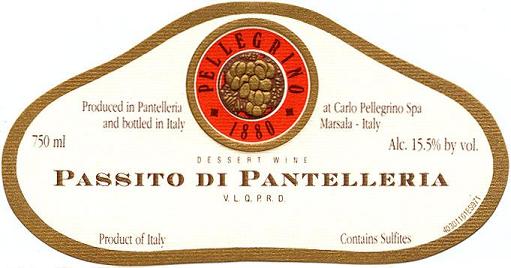 Dessert wines come in all shapes and sizes. Port and port style wines are perhaps the most recognizable to the average wine drinker. But just like most growing regions, or counties at least, have their own take on Sparkling Wine, so to do most of them have their own styles of dessert wine. Throughout Italy there are several. One of the grapes often used for making sweeter wines is Moscato. Today I’ll look at a Moscato based wine from Sicily.
The
Dessert wines come in all shapes and sizes. Port and port style wines are perhaps the most recognizable to the average wine drinker. But just like most growing regions, or counties at least, have their own take on Sparkling Wine, so to do most of them have their own styles of dessert wine. Throughout Italy there are several. One of the grapes often used for making sweeter wines is Moscato. Today I’ll look at a Moscato based wine from Sicily.
The 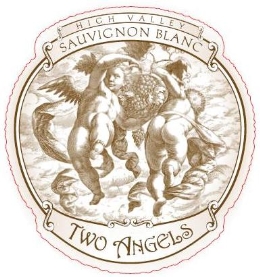 With spring here and summer on the way it’s the perfect time to enjoy lighter more refreshing wines. One of the varietals that scream warm weather to me is Sauvignon Blanc. This adaptable varietal is made in many of the world’s major wine regions. And as is the case with a red varietal like Cabernet Sauvignon, the different regions of the world impart their own stamp upon it. High Valley, north of Napa in California is an area that has been making some interesting and noteworthy Sauvignon Blanc the last few years. Today I’ll look at one from Two Angels.
The
With spring here and summer on the way it’s the perfect time to enjoy lighter more refreshing wines. One of the varietals that scream warm weather to me is Sauvignon Blanc. This adaptable varietal is made in many of the world’s major wine regions. And as is the case with a red varietal like Cabernet Sauvignon, the different regions of the world impart their own stamp upon it. High Valley, north of Napa in California is an area that has been making some interesting and noteworthy Sauvignon Blanc the last few years. Today I’ll look at one from Two Angels.
The  Both consciously and subconsciously Austrian wines have been creeping into my mind more and more. Part of the reason for that is that there are a larger number of them available to us in the US than ever before. The variety has also increased and the quality has been steady. All those factors have come together to make Austria one of the countries whose wines I take every opportunity I can to taste. Grüner Veltliner is the varietal that has been leading the charge on our shores for the Austrian wine industry. That said many other interesting wines are starting to get here too. Today I’ll be looking at a Grüner Veltliner, but keep your eyes open for additional coverage of all manner of Austrian wines in the months ahead.
The
Both consciously and subconsciously Austrian wines have been creeping into my mind more and more. Part of the reason for that is that there are a larger number of them available to us in the US than ever before. The variety has also increased and the quality has been steady. All those factors have come together to make Austria one of the countries whose wines I take every opportunity I can to taste. Grüner Veltliner is the varietal that has been leading the charge on our shores for the Austrian wine industry. That said many other interesting wines are starting to get here too. Today I’ll be looking at a Grüner Veltliner, but keep your eyes open for additional coverage of all manner of Austrian wines in the months ahead.
The  There is a lot of really nice Gewürztraminer and Riesling being produced in Alsace; as a result not nearly as much attention is usually paid to Pinot Blanc. In my opinion that’s a shame. There are examples of this wine out there that are lovely, well priced and most importantly quite delicious. Today I’m going to look at a widely available offering from
There is a lot of really nice Gewürztraminer and Riesling being produced in Alsace; as a result not nearly as much attention is usually paid to Pinot Blanc. In my opinion that’s a shame. There are examples of this wine out there that are lovely, well priced and most importantly quite delicious. Today I’m going to look at a widely available offering from 
 When speaking to friends, readers and other wine lovers in general it seems that by and large Sparkling Wine falls victim to a couple of preconceived notions. The most common is that often people aren’t very familiar with how many wine regions make Sparklers and instead think only of Champagne. Personally I find that just like any other category of wine each regions styles, productions methods and sense of place make for some interesting sipping. Of those who do venture to other areas of the world for Sparkling Wine, many limit themselves to special occasions for its enjoyment. In my opinion that’s a mistake. Sparkling Wine could conceivably have as much of a place on your table alongside a meal as it does next to your party hat on New Years Eve. Today I’m going to look at one from Italy that I just tasted and enjoyed.
The Lamberti Rosé Spumante is a non vintage sparkling wine. This selection was produced using a blend of Pinot Bianco (34%), Raboso (33%) and Pinot Nero (33%). This fruit was sourced from hillside vineyards throughout Trevisio in the Veneto. After pressing, the juice was immediately separated from the pomace to avoid adding more color than desired. The Charmat method was used in production. This is the same method used for Prosecco and Asti. The suggested retail price for this wine is $14.
When speaking to friends, readers and other wine lovers in general it seems that by and large Sparkling Wine falls victim to a couple of preconceived notions. The most common is that often people aren’t very familiar with how many wine regions make Sparklers and instead think only of Champagne. Personally I find that just like any other category of wine each regions styles, productions methods and sense of place make for some interesting sipping. Of those who do venture to other areas of the world for Sparkling Wine, many limit themselves to special occasions for its enjoyment. In my opinion that’s a mistake. Sparkling Wine could conceivably have as much of a place on your table alongside a meal as it does next to your party hat on New Years Eve. Today I’m going to look at one from Italy that I just tasted and enjoyed.
The Lamberti Rosé Spumante is a non vintage sparkling wine. This selection was produced using a blend of Pinot Bianco (34%), Raboso (33%) and Pinot Nero (33%). This fruit was sourced from hillside vineyards throughout Trevisio in the Veneto. After pressing, the juice was immediately separated from the pomace to avoid adding more color than desired. The Charmat method was used in production. This is the same method used for Prosecco and Asti. The suggested retail price for this wine is $14. Malbec stands as the signature grape of Argentina. Lots of other varietals flourish there but Malbec is the varietal that they do like no one else does and perhaps can. That said not every Malbec from Argentina is good. Consistency can be particularly difficult to achieve in the budget category that a lot of readily available Malbecs fall into. With that in mind I decided to take a look at one from
Malbec stands as the signature grape of Argentina. Lots of other varietals flourish there but Malbec is the varietal that they do like no one else does and perhaps can. That said not every Malbec from Argentina is good. Consistency can be particularly difficult to achieve in the budget category that a lot of readily available Malbecs fall into. With that in mind I decided to take a look at one from 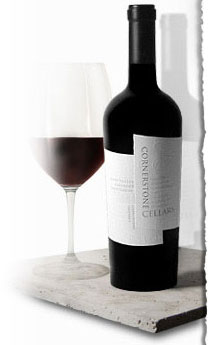 It was about a year ago that I tasted the wines of
It was about a year ago that I tasted the wines of  When it comes to Australian wine,
When it comes to Australian wine,  The other night I had the chance to taste through the wines of
The other night I had the chance to taste through the wines of  Tinto Figuero – 2004 Noble. 1,166 six bottle cases of this offering were produced. Fruit for this selection was sourced from vines with more than 70 years of age. Oak aging occurred over a period of 21 months. The first 15 months was spent in American oak followed by 6 months in French oak. An additional 15 months of bottle age was allowed before release. The suggested retail price for this wine is $130.99. First and foremost this wine is still a baby. It was decanted for 3 hours before we started to taste it. While it was certainly opening up this wine was still tight. Fresh cherries, leather and cigar box aromas mark the nose. Raspberry, blackberry and huckleberry flavors are all present in the layered palate. Dusty dark chocolate emerges around mid-palate and continues through the prodigious finish which is also marked by hints of chicory and cedar. This offering features chewy tannins, balanced by fine acidity. This is the epitome of a special occasion wine. Tinto Figuero 2004 Noble is the sort of selection you want to grab a couple of to lay down in your cellar and forget about for 5-10 years. If you have that sort of patience, you will undoubtedly be rewarded. If however you plan to drink this in the short term, decant it for 4-5 hours at minimum. Either way this is a terrific wine.
Tinto Figuero – 2004 Noble. 1,166 six bottle cases of this offering were produced. Fruit for this selection was sourced from vines with more than 70 years of age. Oak aging occurred over a period of 21 months. The first 15 months was spent in American oak followed by 6 months in French oak. An additional 15 months of bottle age was allowed before release. The suggested retail price for this wine is $130.99. First and foremost this wine is still a baby. It was decanted for 3 hours before we started to taste it. While it was certainly opening up this wine was still tight. Fresh cherries, leather and cigar box aromas mark the nose. Raspberry, blackberry and huckleberry flavors are all present in the layered palate. Dusty dark chocolate emerges around mid-palate and continues through the prodigious finish which is also marked by hints of chicory and cedar. This offering features chewy tannins, balanced by fine acidity. This is the epitome of a special occasion wine. Tinto Figuero 2004 Noble is the sort of selection you want to grab a couple of to lay down in your cellar and forget about for 5-10 years. If you have that sort of patience, you will undoubtedly be rewarded. If however you plan to drink this in the short term, decant it for 4-5 hours at minimum. Either way this is a terrific wine.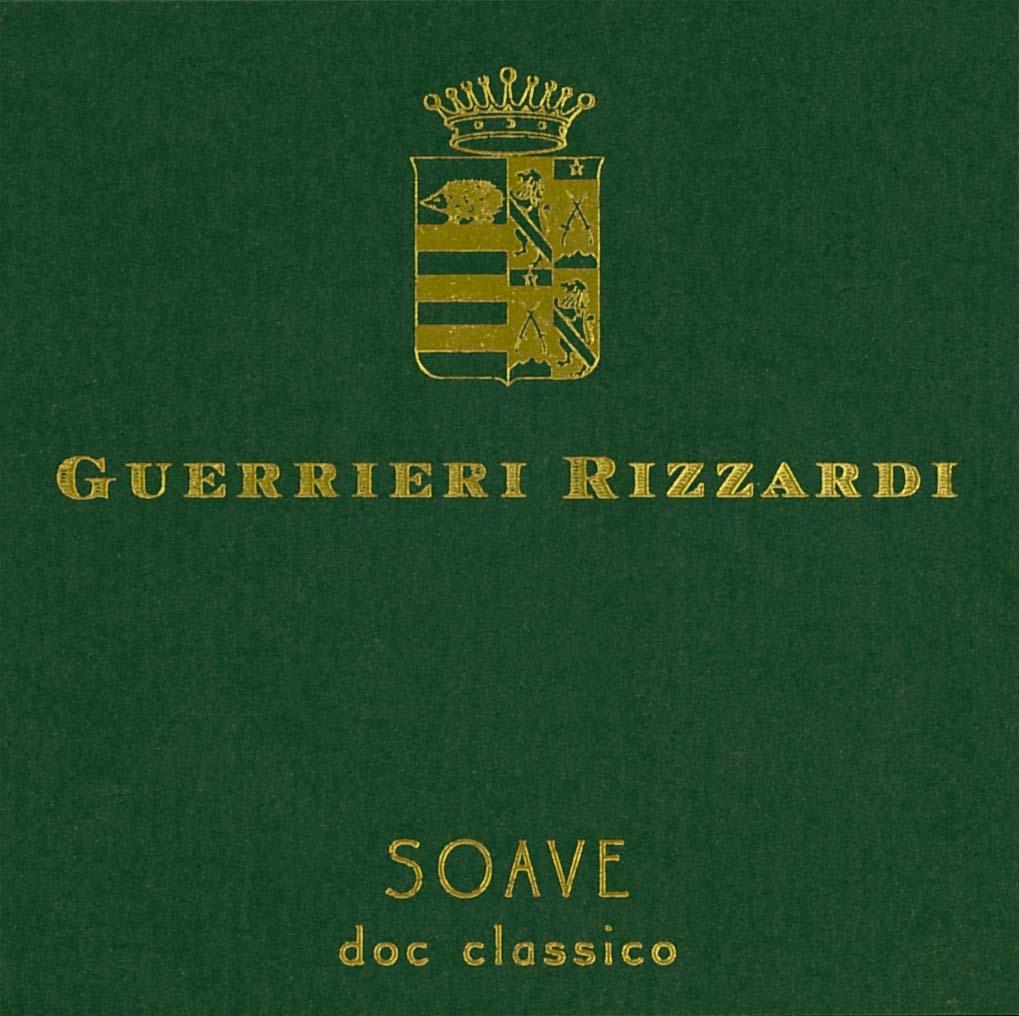 I've been glad to see more and more Soave on US shelves of late. The average wine consumer thinks of Pinot Grigio first in terms of Italian white wines. But over time with any luck Soave will gain ground as another attractive, well priced option. Today I'm going to look at an example from 2008.
The 2008
I've been glad to see more and more Soave on US shelves of late. The average wine consumer thinks of Pinot Grigio first in terms of Italian white wines. But over time with any luck Soave will gain ground as another attractive, well priced option. Today I'm going to look at an example from 2008.
The 2008  Valentine’s Day is here and to help celebrate the day in style some delicious wine is in order. When organizing a special occasion or Holiday meal I like to plan for several wines for each stage of the day. Certainly if you’re going to spend Valentine’s Day with someone important in your life each part of that celebration should have a wine to go with it. So today I’m presenting a trio of wines that will make for delicious drinking on Valentine’s Day or any other time. It also doesn’t hurt that each of the wines I’m recommending are modestly priced compared to the value they offer.
To start off with you’ll want a wine that’s appropriate to settle in to the day. Something light, yet substantial in flavor, which also pairs as easily with conversation as it does appetizers. My selection is the
Valentine’s Day is here and to help celebrate the day in style some delicious wine is in order. When organizing a special occasion or Holiday meal I like to plan for several wines for each stage of the day. Certainly if you’re going to spend Valentine’s Day with someone important in your life each part of that celebration should have a wine to go with it. So today I’m presenting a trio of wines that will make for delicious drinking on Valentine’s Day or any other time. It also doesn’t hurt that each of the wines I’m recommending are modestly priced compared to the value they offer.
To start off with you’ll want a wine that’s appropriate to settle in to the day. Something light, yet substantial in flavor, which also pairs as easily with conversation as it does appetizers. My selection is the 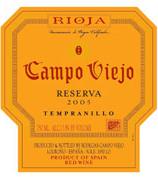 The second wine you’re going to need is something to pair with the main part of your meal. On these occasions I look for something that will complement a wide array of foods. My tendency is also to look for something with a lush mouth-feel that lends itself to easy drinkability while also providing complexity. My selection this time out is the
The second wine you’re going to need is something to pair with the main part of your meal. On these occasions I look for something that will complement a wide array of foods. My tendency is also to look for something with a lush mouth-feel that lends itself to easy drinkability while also providing complexity. My selection this time out is the 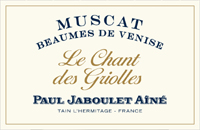 The third wine I plan for on a special day is a closer of sorts. It can be a dessert wine but doesn’t have to be. Sparkling Wine could work as well. But it should be something that can pair with your dessert and that you’ll want to continue drinking when dessert is over. The dessert wine that I recently tasted and was inspired to report on is the
The third wine I plan for on a special day is a closer of sorts. It can be a dessert wine but doesn’t have to be. Sparkling Wine could work as well. But it should be something that can pair with your dessert and that you’ll want to continue drinking when dessert is over. The dessert wine that I recently tasted and was inspired to report on is the  I recently attended a tasting of Austrian wines. The focus was on Blaufränkisch, which is Austria’s big red gift to the wine world in my opinion. However there were other varietals there. The cross sections of wines and styles were inspiring and I plan on tasting more and more wines from Austria going forward. If the tasting I attended was any indication there will be plenty of selections worth reporting on. Today I’m going to look at two white wines from winemaker
I recently attended a tasting of Austrian wines. The focus was on Blaufränkisch, which is Austria’s big red gift to the wine world in my opinion. However there were other varietals there. The cross sections of wines and styles were inspiring and I plan on tasting more and more wines from Austria going forward. If the tasting I attended was any indication there will be plenty of selections worth reporting on. Today I’m going to look at two white wines from winemaker  For quite a number of years I’ve been fond of the Michael David Wines. When I see their labels or think of their offerings I’m reminded of wines that tend to be big, bold and widely available. The price points for the wines also tend to be reasonable. Today I’m going to look at their current release of Syrah.
The
For quite a number of years I’ve been fond of the Michael David Wines. When I see their labels or think of their offerings I’m reminded of wines that tend to be big, bold and widely available. The price points for the wines also tend to be reasonable. Today I’m going to look at their current release of Syrah.
The  Single varietal wines are probably the ones most American consumers have historically identified with and looked for. There now seems to be a growing segment in the US that realizes the power of blended wines. As we mature as a wine consuming culture in the US there are more and more folks that are comfortable straying outside of their safe zone and experimenting. Blended wines, whether classic Bordeaux style blends or otherwise can offer many positives. Of course at their best the goal is to achieve the best possible wine using the highest quality fruit a producer has available. In addition to that sometimes its as simple as some Merlot being blended in to a Cabernet for additional complexity. In any case while the single varietal expressions have their place too, blended wines are their own unique discipline. Today I'll look at one from Bodega Septima.
The
Single varietal wines are probably the ones most American consumers have historically identified with and looked for. There now seems to be a growing segment in the US that realizes the power of blended wines. As we mature as a wine consuming culture in the US there are more and more folks that are comfortable straying outside of their safe zone and experimenting. Blended wines, whether classic Bordeaux style blends or otherwise can offer many positives. Of course at their best the goal is to achieve the best possible wine using the highest quality fruit a producer has available. In addition to that sometimes its as simple as some Merlot being blended in to a Cabernet for additional complexity. In any case while the single varietal expressions have their place too, blended wines are their own unique discipline. Today I'll look at one from Bodega Septima.
The  When it comes to South American wine Cabernet Sauvignon was the first varietal I started drinking. It was my realization back then that there was great value in the Cab category that started me on tasting wines from both Chile and Argentina. Perhaps because it was the first thing from there I started that I still get excited when I find a solid Cabernet Sauvignon value from South America. Over the last few months I’ve had the chance to taste a number of wines from Bodega Septima. During the next couple of days I’m going to report on a few recent examples I’ve really liked. Today I’m going to look at their current release of Cabernet Sauvignon.
The
When it comes to South American wine Cabernet Sauvignon was the first varietal I started drinking. It was my realization back then that there was great value in the Cab category that started me on tasting wines from both Chile and Argentina. Perhaps because it was the first thing from there I started that I still get excited when I find a solid Cabernet Sauvignon value from South America. Over the last few months I’ve had the chance to taste a number of wines from Bodega Septima. During the next couple of days I’m going to report on a few recent examples I’ve really liked. Today I’m going to look at their current release of Cabernet Sauvignon.
The  There are winemakers out there who work on numerous projects throughout the year on a consulting basis. Some like Napa Valley’s
There are winemakers out there who work on numerous projects throughout the year on a consulting basis. Some like Napa Valley’s  Tawny Port is amongst the categories of dessert wines that I reach for most often. When they’re done right, the combination of flavor and quality in an often very reasonable price point is hard to resist. Throw in the general availability of a great number of standard bearer Tawny Ports and it's easy to see why a lot of folks look towards them for their after dinner wine needs. All Tawny Ports aren’t created equally of course so I find sampling them a fascinating exercise. Today I’m going to look at an example from long time Port House
Tawny Port is amongst the categories of dessert wines that I reach for most often. When they’re done right, the combination of flavor and quality in an often very reasonable price point is hard to resist. Throw in the general availability of a great number of standard bearer Tawny Ports and it's easy to see why a lot of folks look towards them for their after dinner wine needs. All Tawny Ports aren’t created equally of course so I find sampling them a fascinating exercise. Today I’m going to look at an example from long time Port House  Every wine region has its signature grape varietal, some like South Africa have a couple. For white wine its Chenin Blanc and when it comes to reds it's Pinotage. The varietal was created about 85 years ago when Cinsault and Pinot Noir were crossed. And while there are other reds that do well in South Africa, Pinotage is the varietal that sets them apart from the pack. Today I'll look at one from
Every wine region has its signature grape varietal, some like South Africa have a couple. For white wine its Chenin Blanc and when it comes to reds it's Pinotage. The varietal was created about 85 years ago when Cinsault and Pinot Noir were crossed. And while there are other reds that do well in South Africa, Pinotage is the varietal that sets them apart from the pack. Today I'll look at one from